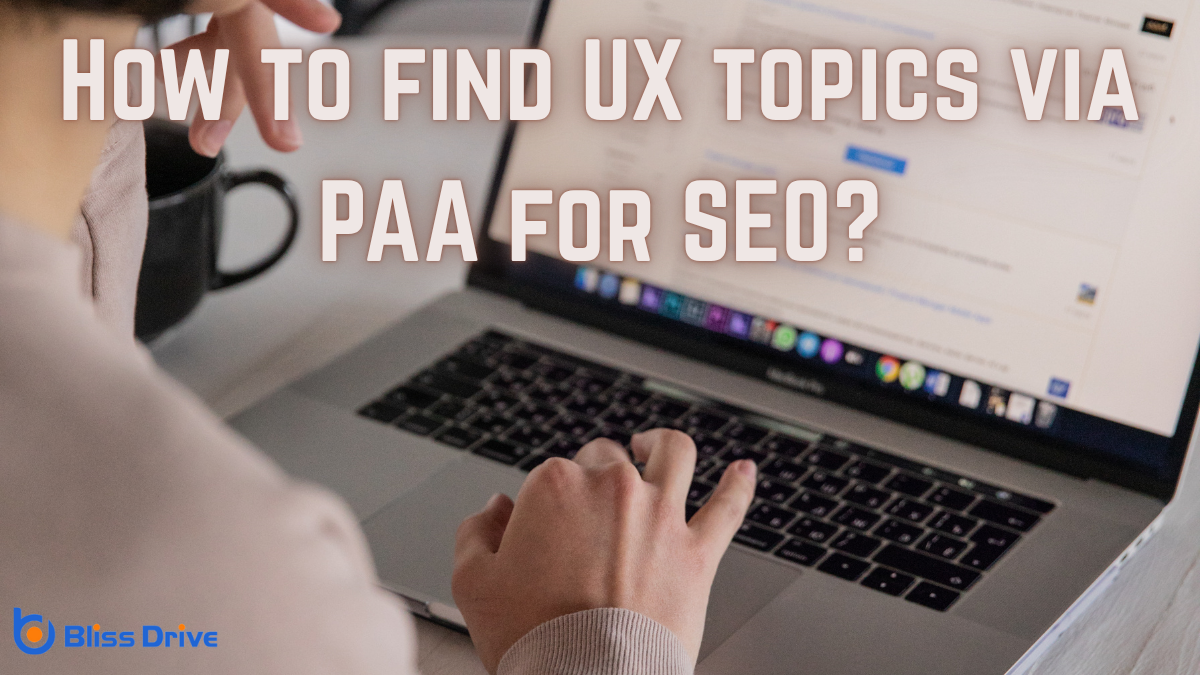Learn More About Us

To find UX topics via Google's 'People Also Ask' for SEO, start by searching a broad UX term. You'll see the PAA box showing related user queries. Exploring these questions reveals genuine user interests, which helps refine your keyword strategy. Grasp the context and phrasing to understand user intent better, and create content that addresses these inquiries with clarity. By focusing on user problems, you enhance engagementThe interactions that users have with a brand’s content on social media. and visibility. There's so much more to discover!
Have you ever wondered how Google's 'People Also Ask' feature can enhance your SEO strategy? By understanding this tool, you can gain insights into what users are curious about, directly influencing your content creation.
As you search a question on Google, you’ll notice a list of related questions under 'People Also Ask'. These are real queries users have, providing a window into their interests and concerns. By addressing these questions within your content, you can increase engagement and relevance.
This feature helps you identify gaps in your content and guarantees you're directly answering the questions your audience is asking, aligning with their needs. Embracing 'People Also Ask' can make your content more visible and valuable to users.

Curiously, how can you turn the 'People Also Ask' (PAA) feature into a powerful tool for keyword research?
Start by typing a broad UX topic into Google. Notice the questions in the PAA box. These questions reflect real user queries and concerns, offering insight into what people truly want to know.
By clicking on each question, you'll reveal more related questions, expanding your list of potential keywordsWords or phrases that users type into search engines to find information..
Focus on questions that align with your content goals and audience needs. Extract keywords directly from these queries and incorporate them into your content strategyA plan for creating, publishing, and managing content to meet business goals..
This approach guarantees you're targeting terms with proven interest. Regularly revisit PAA to keep your keyword strategy fresh and aligned with evolving user interests.
With PAA, you're not guessing—you're responding to real curiosity.
Building on the insights gained from leveraging the PAA feature for keyword research, it's equally important to understand the user intent behind these questions.
When you explore PAA results, you're not just identifying keywords but also uncovering what users genuinely seek. Are they looking for in-depth information, quick solutions, or comparisons?
Analyzing these questions helps you grasp whether they're in a research phase, seeking purchase guidance, or needing problem-solving advice. By pinpointing these intents, you can tailor your content strategy to meet users' needs.
Dive deeper into each PAA question by considering the context and phrasing. This way, you guarantee your content aligns with user expectations, enhancing engagement and ultimately boosting SEO performance.
Understanding intent is key to effective UX.
How can you transform PAA insights into compelling content? Start by identifying the questions users frequently ask. Use these questions to structure your content, ensuring it directly addresses user inquiries. This approach not only satisfies user curiosity but also aligns with search intentThe purpose behind a user’s search query., making your content more discoverable.
Next, enrich your content with detailed answers and examples. If a PAA question is "How does UX design improve SEO?", craft a section explaining the relationship between UX and SEO, incorporating real-life scenarios or case studiesIn-depth analyses of specific instances or examples to highlight success stories or lessons learned.....
Remember to use clear, engaging language that resonates with your audience. Incorporate visuals and infographicsVisual representations of information, data, or knowledge intended to present complex information qu... to break down complex topics. By doing this, you make your content both informative and visually appealing, thereby enhancing user experience and boosting engagement.

After crafting content based on PAA insights, it's important to evaluate how these efforts impact your SEO strategy.
Begin by monitoring your site's traffic and search rankingsThe position at which a website appears in the SERP.. Use tools like Google AnalyticsA web analytics service offered by Google that tracks and reports website traffic. to track changes in page views and user engagementThe level of interaction and involvement users have with social media content.. Check if your pages are capturing more organic search queries related to your targeted PAA questions.
Next, assess the quality of traffic. Are users spending more time on your site? Are bounce rates decreasing? These metrics can indicate if your content is resonating with your audience.
Finally, analyze conversionThe completion of a desired action by a referred user, such as making a purchase or filling out a fo... rates. Are visitors completing desired actions like signing up for newsletters or purchasing products? This shows if your content not only attracts but also converts.
Measure these factors regularly to refine and improve your SEO strategy continually.
By utilizing the 'People Also Ask' feature, you can uncover valuable UX topics that enhance your SEO strategy. Explore PAA for effective keyword research and gain insights into user intent. Use these insights to craft engaging, user-focused content that resonates with your audience. Don’t forget to measure the impact on your SEO efforts to refine your strategy further. Embrace PAA to stay ahead and guarantee your content meets users’ needs effectively.
